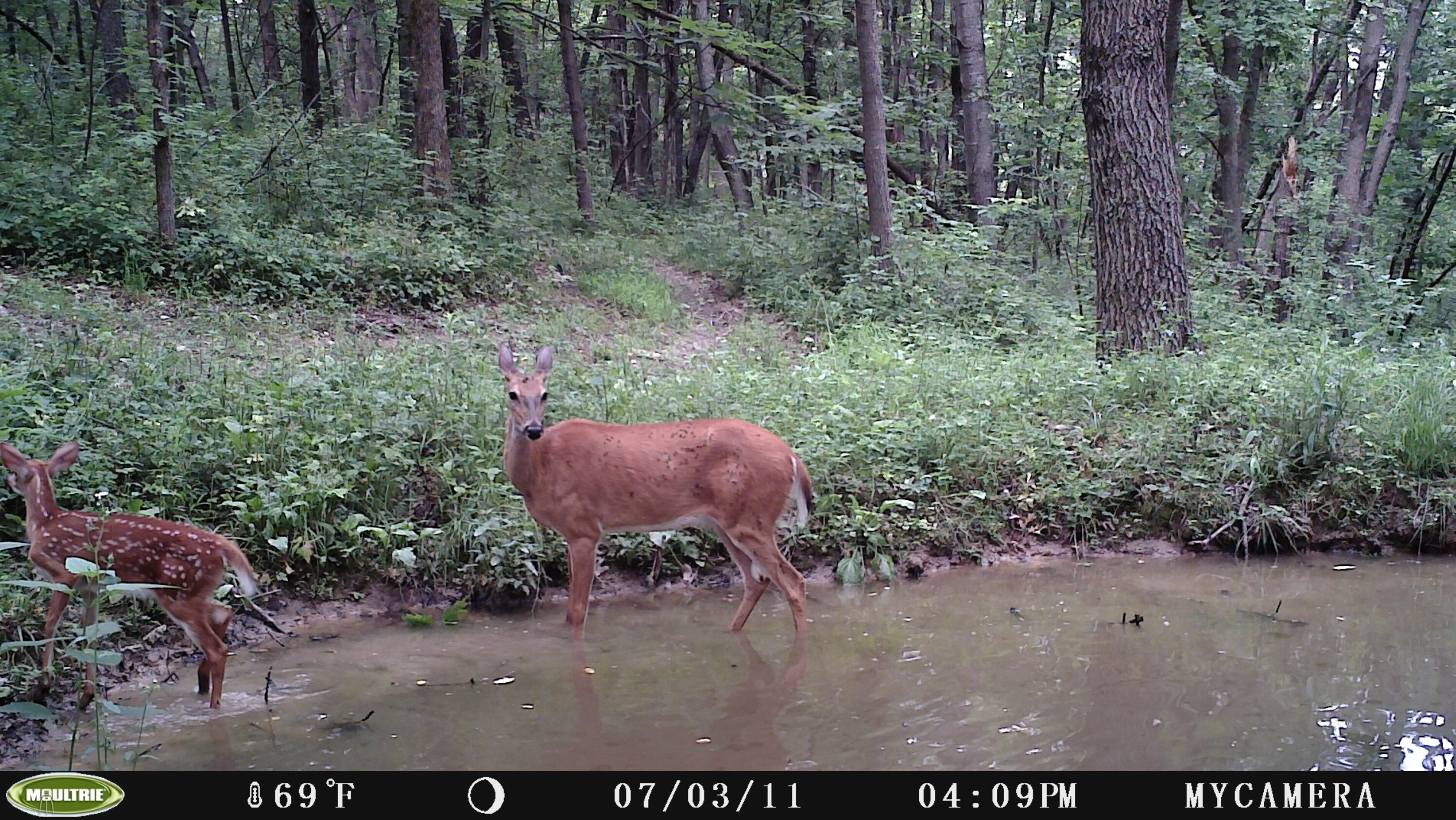If you think food plots attract wildlife, wait until you see what water can do!
The benefits, importance, and potential of water is often overlooked - far beyond water for drinking. Food, cover and water must be available to attract and hold wildlife on your property.
Wildlife and deer are attracted to water for a number of reasons; drinking, feeding, minerals, relief from biting insects, cooling, resting, playing, security, and protection from predators just to name a few.

Water & Aquatic Plants
Water and specific aquatic plants can be introduced almost anywhere to attract and hold wildlife and deer; especially if no other water is nearby. We often hear that our aquatic plots are the best food plots hunters have ever seen. When wildlife is in, on, or near a pond, deer and other wildlife feel secure because of their presence. Wildlife and deer concentrate their attention to the water and other wildlife and less on the hunter.
Location & Design
Proper location is critical. Ponds can be especially productive when they are located near food sources, cover and deer bedding areas. Ponds can be placed where they will aid in wildlife retention and to direct wildlife along trails or corridors most desirable to you (near your stand, cabin or home). Ponds can be created in lowlands near the water table or higher elevations with pond liners. Ditches, valleys, gullies, ravines, or draws can be made to hold water year round, especially in hilly country. Even if ponds don't hold water year round, they may hold water for days or weeks after each rainfall. Multiple aquatic food plots on your property will attract and hold additional wildlife.
Design considerations include the primary purpose and overall cost. Wildlife ponds do not need to be large but they can be. Wildlife ponds do not need to be deep but they can be. What are the benefits of irregular shapes and more shoreline? Thick cover makes wildlife feel secure but aquatic plants require sunlight. What can you learn from test holes? ABI can answer all of these questions. Ultimately the design of your aquatic food plot is determined by the goals you want to achieve.

Benefits of ponds with impermeable liners include the ability to construct a lake, pond, or aquatic food plot anywhere, with any size, shape or depth. Lined ponds usually require less excavation, decreased costs, age slower, and can remain clearer than earthen ponds. Water elevation can be brought to grade level and limit nutrient loading. Nearby trees, shrubs and plants do not affect water level fluctuations. Fish grade liners (not rubber roofing liners) are desirable for aquatic food ponds. Most importantly, liners DO NOT LEAK.
Clay or bentonite lined ponds are other options, but are usually more expensive overall. 3 ft. of good quality clay or 6 in. of bentonite is usually required to evenly cover all areas of a pond. If deer, muskrats, fallen trees or rocks penetrate the clay or bentonite, the pond will leak. When water is murky, aquatic plants may be difficult to sustain.
ABI can install, help, or give you instructions for installing yourself. Contact ABI for information about 13 different ways to fill ponds and maintain water levels throughout the year.
Deer, waterfowl and wildlife are attracted to and will travel great distances for specific aquatic plants and minerals in the soil near water.
Contact ABI for many cost effective ideas to make your aquatic food plot more productive.
Consulting
Aquatic Biologists Inc. will consult on your property to enhance and improve wildlife and hunting habitat with strategically placed and designed ponds, and dramatically improved aquatic habitat. ABI also consults on lakes, fish, swim ponds and can improve and benefit any and all water habitat and water quality.
